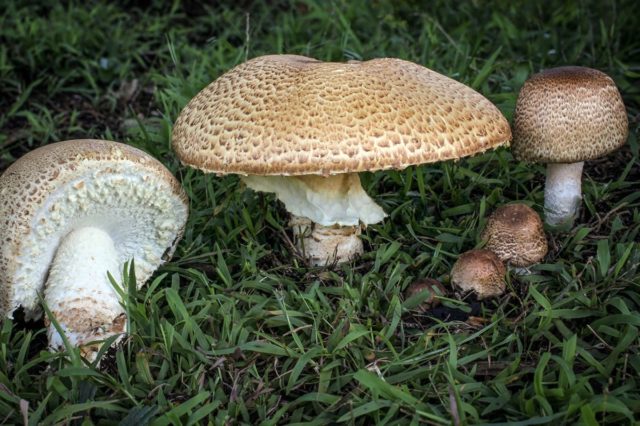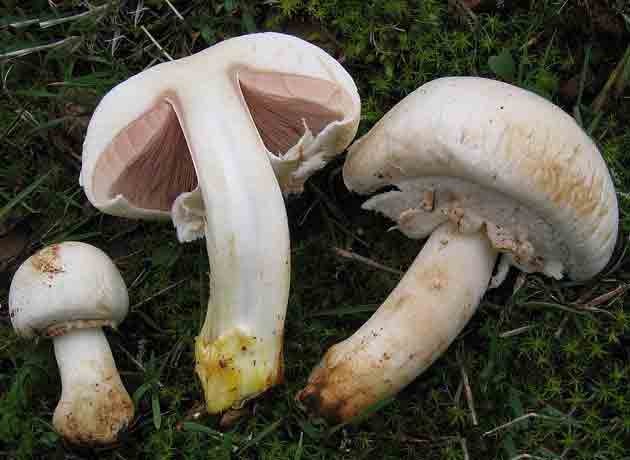Content
Champignon Augustus (popularly - spikelet) is a delicious and aromatic edible mushroom that is most often found in coniferous forests from late summer to mid-autumn. It is the largest of all types of mushrooms. Unfortunately, it is not easy to find it. However, if you managed to stumble upon a place where such a mushroom grows, then, as a rule, it will not be alone - the mushroom picker may be lucky enough to fill half of the basket at once. A photo and description of the August mushroom will not allow you to confuse it with poisonous counterparts, in particular, with red mushroom and pale toadstool. You can cook this mushroom in various ways: boil, fry, stew, pickle, dry for future use, and even eat it raw. However, it is not recommended to get too carried away with dishes from it - it can contribute to the accumulation of heavy metal cadmium in the body.
What does the mushroom august look like?
The cap of the mushroom augustus usually reaches 5 to 15 cm in diameter. In a young specimen, it is closed and has the shape of a hemisphere, but with age it becomes prostrate. The color of the integumentary skin of the cap can be yellowish or golden. On its entire surface, there are many dull brown or orange-brown scales. A tubercle is often visible in the center of the cap.

Champignon august - the largest representative of the Champignon family
The spore-bearing layer is lamellar. As the fruiting body ages, it changes color from pinkish to dark brown. In young mushrooms, the plates are covered with a light film. Subsequently, it breaks, hanging in fragments from the edges of the cap and forming a large folded white ring with yellowish flakes on the stem.
The stem of the August mushroom is usually long (5-10 cm) and about 2 cm thick. It is dense, white (but turns yellow when pressed), has a rough surface.
The pulp of the mushroom is fleshy, elastic. It is white, but at the break, oxidizing in air, it becomes pink. The taste of the pulp is pleasant, tangy, mushroom. The scent is a bit like almonds or aniseed.
Briefly and informatively, a video tells about this mushroom:
Where does the mushroom august grow
Champignon Augustus prefers to grow under spruce trees in conifers, less often in mixed forests, choosing a clayey soil rich in organic matter. It is often found near anthills. It is not common, but usually bears fruit in large groups. The harvest season begins in August and lasts until the end of September and the beginning of October.

This mushroom prefers to grow under conifers.
Is it possible to eat the champignon august
Champignon august is a good edible mushroom. In terms of taste and nutritional value, it belongs to the 3rd category.It also has medicinal qualities - its composition is rich in vitamins A, C, PP, trace elements (phosphorus, potassium), as well as substances with pronounced antimicrobial properties.
False doubles
The most dangerous of the mushrooms with which the August champignon can be confused is death cap... It is extremely toxic - poisoning is often fatal to it. Young toadstools and champignons have quite a lot of similarities: the shape and color of the caps, plates, the presence of rings on the legs. Therefore, it is important to always remember their main differences from each other:
- at the base of the toadstool there is always a volva - a thick “pouch” that has not grown at the roots, into which its leg is, as it were, inserted;
- there are no scales on the toadstool's cap;
- in the champignon of August, the color of the plates changes with aging, while in its poisonous "double" they always remain snow-white;
- when pressed and on a fracture of the surface, the pale toadstool does not change color.

Toadstool poisoning is deadly
Red champignon - another poisonous "twin" of August. Such features will help to distinguish it:
- if you cut the leg of this mushroom at the base, it will instantly acquire a rich yellow color;
- its pulp smells strong and unpleasant (resembling the smell of iodine or "carbolic acid");
- the size of the poisonous "brother", as a rule, is inferior to the August one.

Red champignon - the poisonous "double" of the August
Collection rules and use
Going into the forest in season for August mushrooms, you should keep in mind several important rules:
- Only if there is exact confidence that the mushroom has been identified correctly, you can put it in your basket.
- Do not collect and eat old, wormy, overly soft or rotten specimens.
- It is dangerous for health to go on a "quiet hunt" in places located near industrial enterprises, factories, dumps, highways and sewage treatment plants. Mushrooms are known for being able to actively absorb and accumulate harmful substances in fruit bodies.
- In the process of collecting the fruit bodies, it is recommended not to pluck, but carefully cut off with a knife in order to keep the mycelium intact.
Like other edible champignons, August mushrooms are versatile in culinary use. They are eaten raw and cooked and stored in almost any form.
Conclusion
A photo and description of the August champignon will certainly be useful to a mushroom picker who gathers in the spruce forest during the season. It is important to know how to distinguish this edible mushroom from dangerous poisonous "doubles", where to look and how to collect it correctly. August champignons are not easy to find, but if you are lucky, you can prepare many dishes from these tasty, aromatic and nutritious "gifts of the forest". The main thing is not to forget about moderation in food, so that these mushrooms will benefit health, and not harm him.








